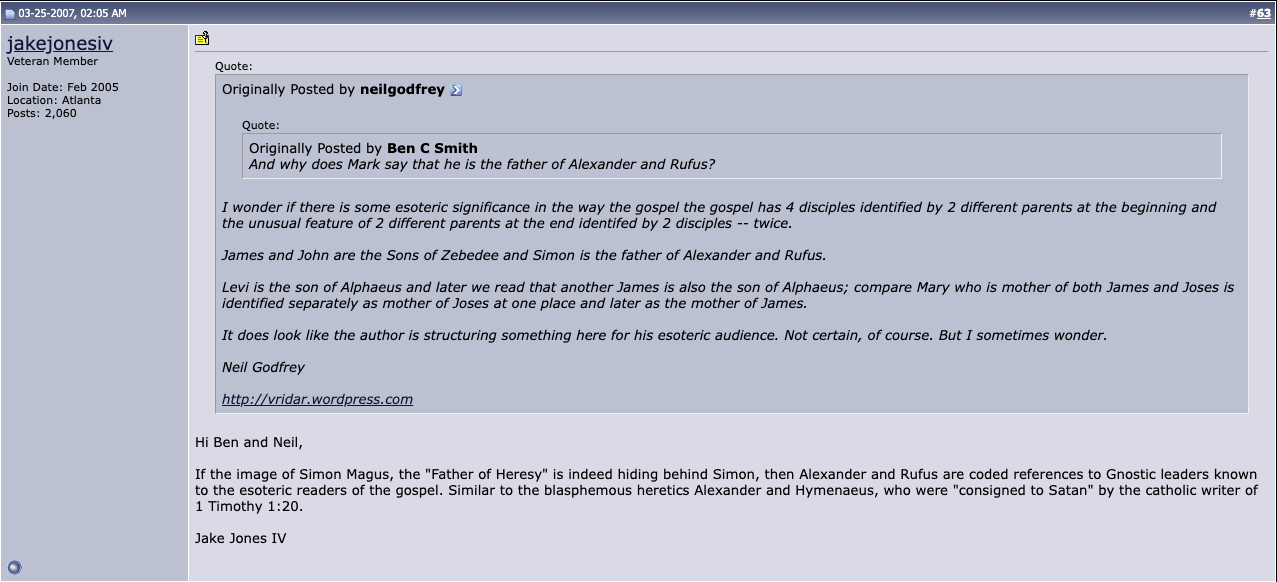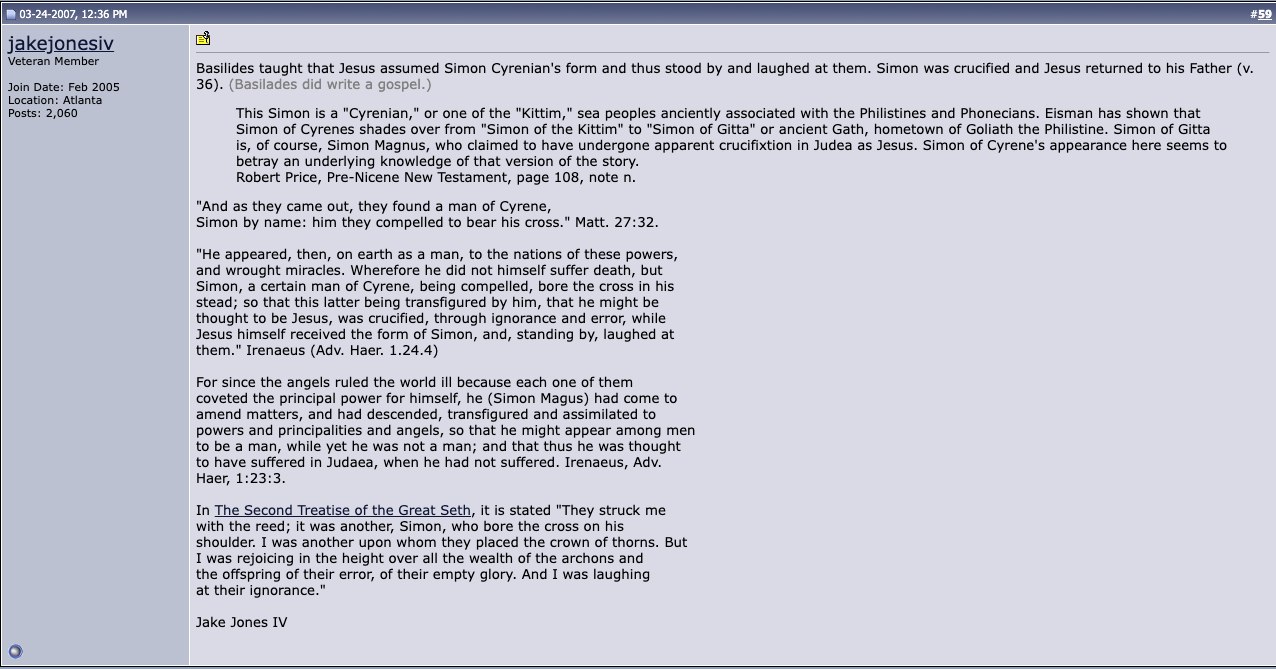As per Weeden, the Gospel of Mark was written in response to a strident claim to push Peter’s “primacy” in the church.
1. Written at a time when Peter was proclaimed as leading apostle?
Weeden (in a question and answer session on the “2 Jesuses” dvd avail at Westar) sums up his reasons for viewing the gospel as written at a time when the dominance of Peter was being pushed into the face of the churches. Mark’s intention was to undermine these claims: Continue reading “3 more pointers to a late date for Mark? – revised”


